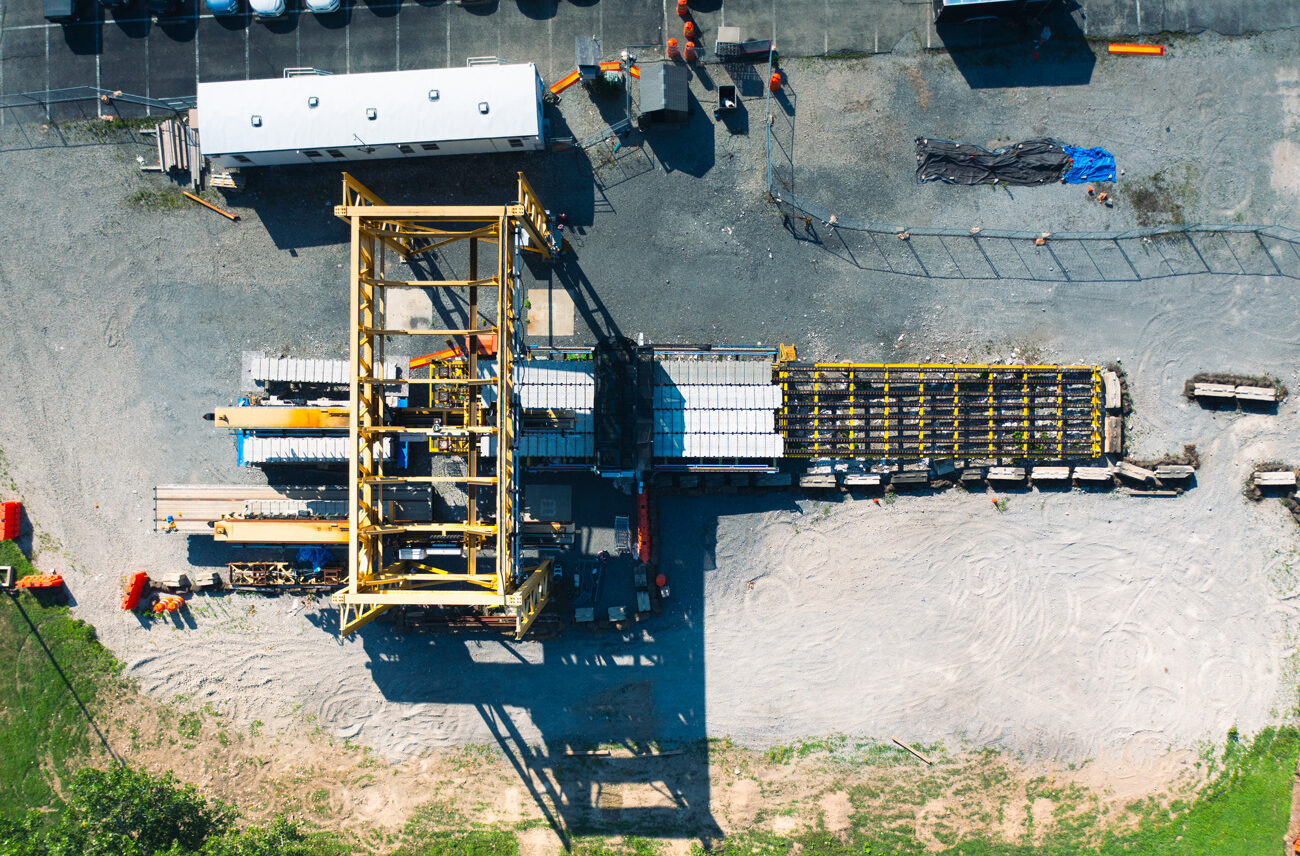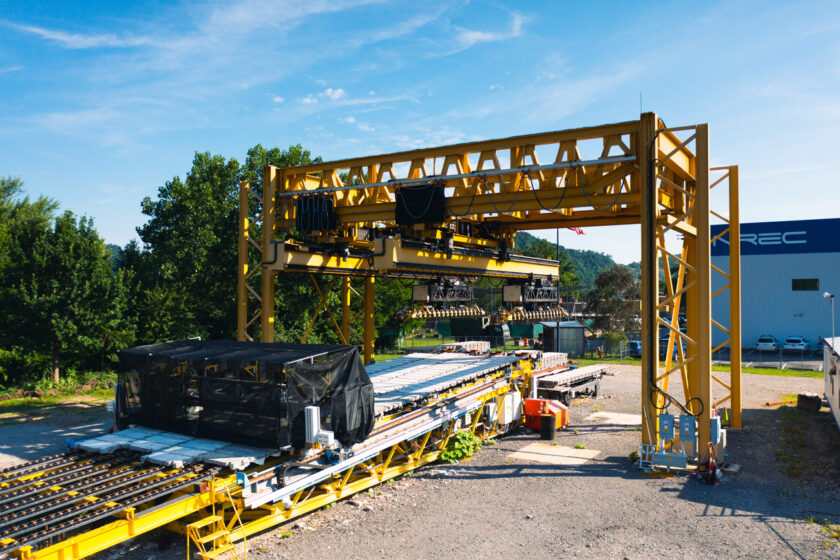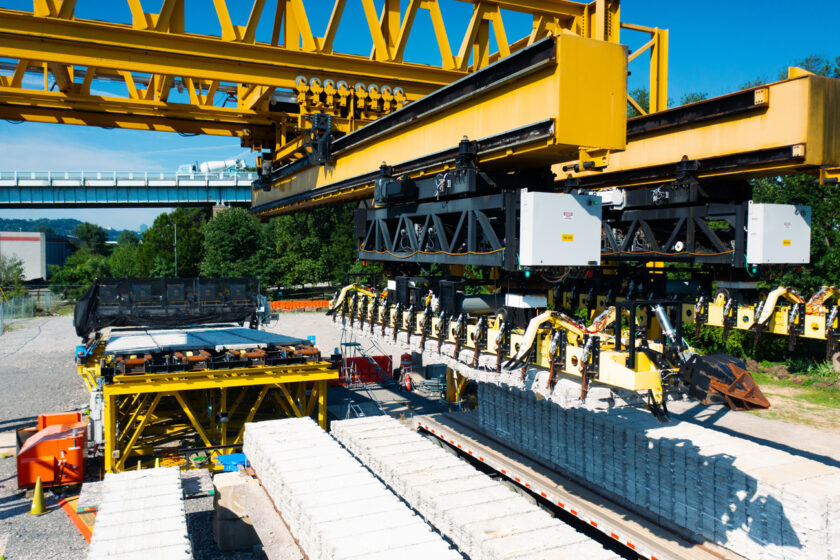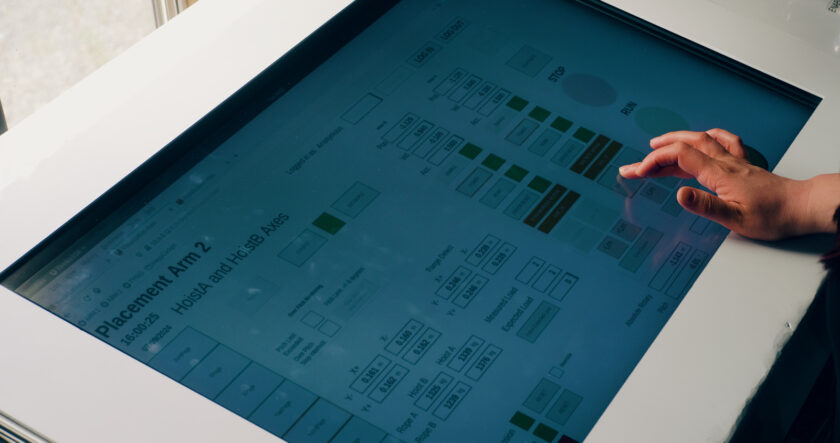News & Insights
Armor 1: revolutionizing Mississippi River revetment with the world’s largest mobile robot
The U.S. Army Corps of Engineers, in partnership with Salas O'Brien and the National Robotics Engineering Center, is revolutionizing flood protection on the Mississippi River with the Armor 1 project, a groundbreaking initiative to modernize mat sinking using advanced robotic technology.

The Mississippi River, often called the lifeblood of America’s heartland, supports billions of dollars in commerce and sustains millions of people and acres of farmland along its course. The U.S. Army Corps of Engineers (USACE) has long been at the forefront of efforts to fortify the river’s banks and levees, ensuring the safety and economic stability of the regions it traverses.
In the early 20th century, particularly after the devastating floods of the 1920s and 1930s, USACE began implementing large-scale projects to provide comprehensive flood protection. This included the establishment of the mat sinking unit tasked with laying concrete mats along the riverbed—a process known as revetment.
Today, USACE is spearheading the Armor 1 project, a groundbreaking initiative to modernize the mat sinking process with advanced robotic technology. This ambitious project, in partnership with Salas O’Brien and the National Robotics Engineering Center (NREC) at Carnegie Mellon University, represents a significant leap forward in using robotics and automation for infrastructure protection.

Addressing the challenges of traditional methods
The genesis of the Armor 1 project was a recognition of the inherent dangers and inefficiencies in the existing mat sinking operations. The traditional process developed in the 1940s required over 300 workers manually handling heavy, hundred-pound devices while maneuvering large concrete mats, all amid the unpredictable and often perilous conditions of the river. Job Bedford, Lead Robotics System Engineer emphasized the meaning of this mission for the project team. “We are innovating to be better, faster, stronger, more agile, and to be safer, so we don’t have to put these people at risk.”
Armor 1 represents a technological breakthrough, with the multidisciplinary team designing an innovative robotic system capable of performing the complex tasks involved in mat sinking.

Developing a 329-ton robotic system from the ground up
The development process has involved a multi-disciplinary team and is progressing through multiple prototyping phases. The current phase four prototype is a two-arm system that is being constructed and tested at NREC’s facility in Pittsburgh, PA.
The final system will include a total of six arms, integrating mechanical engineering and advanced software to enable precise and coordinated movements essential for effective mat placement. “While each individual component is not particularly complicated on its own, the real innovation lies in the robotics technology we are developing with NREC, which coordinates these components in a seamless, beautiful symphony to efficiently build these mats,” stated Ted Keramidas, Senior Mechanical Technician at Salas O’Brien.
Senior Robotics Software Engineer, Dorothy Kirlew, leads the software team comprising Salas O’Brien and NREC experts. “Armor one is really unique in that we started from absolute scratch. We wrote the very first lines of code for it, and we had to grow it from nothing. We’ve created both the scaled-down prototype and a full-width simulator so we can test how our code works not just on two arms, but on the full-scale system with six arms, 35 deck rows, nine clusters of tie systems and perception systems all working together.”

Transitioning to implementation of the world’s largest mobile robot
As the project moves into its implementation phase, the focus shifts to rigorous testing and validation. The system is being assembled in Louisiana, where trials will ensure all components function seamlessly under real-world conditions. Jim Arthur, Assistant Director of Project Management at NREC, shared the excitement surrounding this milestone. “We’ve lived with this project for a very long time now. And, to finally see it move from the drawing board to the land-based prototype, and then finally out onto the barge on the river for the production users, is a big and exciting step.”
Once implemented, Armor 1 will be the world’s largest mobile robot. This pioneering effort demonstrates how collaborative innovation can address complex challenges, protect vital resources, and pave the way for resilient and sustainable infrastructure systems.
For media inquiries on this article, reach out to Stacy Lake, Director of Corporate Communications

Jon Vernau
Jon Vernau oversees the Advanced Technologies & Robotics team, spearheading initiatives in Automation, Engineering Strategies, Industrial Internet of Things (IIOT), and robotics applications in both DOD and industrial manufacturing facilities. With over 30 years of active-duty military and civilian experience with government clients, Jon is responsible for research and development, project origination and execution, resource allocation, and financial performance of the business line. His leadership and expertise are instrumental in driving success and growth for the team and the firm. Jon serves as a Principal at Salas O’Brien. Contact him at [email protected]

Harry Kleiser
Harry Kleiser leads Salas O’Brien’s federal projects, driving strategic initiatives while fostering innovation and collaborative problem-solving on his team. With 25+ years of experience alongside federal government agencies and working in the AEC industry, Harry is instrumental in developing and implementing project and program-specific solutions to address complex mission needs. Harry’s leadership is crucial in supporting growth and achieving excellence for both clients and Salas O’Brien. Contact him at [email protected]

Job Bedford
Job Bedford is a Lead Robotics Systems Engineer and the technical lead for the Armor 1 project, the soon-to-be largest mobile robotics system in the world. With over a decade of robotics experience, he is committed to impacting clients and the world, making technical visions come to life, and keeping his team inspired and effective. His leadership and expertise are instrumental in Salas O’Brien’s advancement. Contact him at [email protected]

Dorothy Kirlew
Dorothy Kirlew is a Senior Robotics Software Engineer and serves as Head of Software for the Armor 1 mat sinking project, where she leads the development of new software solutions. With nearly a decade of experience in her field, she oversees software development, designing and implementing comprehensive testing procedures, and transforming prototype software into refined final products. Dorothy has been dedicated to the Armor 1 project for four years, drawing on her extensive expertise to drive success. Her career experience includes projects such as cube satellites, unmanned aerial vehicles, and advanced vision systems for the visually impaired. Contact her at [email protected]